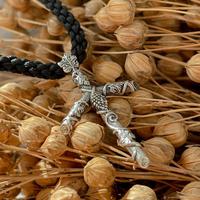The Khakhuli Triptych, a paramount relic of Georgian religious art, embodies a profound narrative of faith, artistry, and cultural resilience. This article explores the triptych's historical journey, artistic significance, and its role in Georgian Orthodoxy, offering insights for travelers and enthusiasts of religious history and art.
Historical Journey of the Khakhuli Triptych
Dating back to the medieval era, the origins of the Khakhuli Triptych are generally placed in the 12th century, though some scholars speculate an earlier inception in the 8th or 9th century. Initially housed in the Khakhuli Monastery in the Tao-Klarjeti region, the triptych has traversed through time and space, echoing the turbulent history of the region. Its journey from its original location, now part of modern-day Turkey, to Georgia, mirrors the shifting geopolitical landscapes of the era.
The triptych's arrival in Georgia marked a significant chapter in its history. Currently residing in the Georgian National Museum, it stands not only as an artifact of religious reverence but also as a testament to Georgia's enduring cultural and religious identity amidst historical upheavals.
Artistic Brilliance of the Triptych
The Khakhuli Triptych is an exemplar of medieval Georgian craftsmanship. Measuring 1.47 meters (about 4.8 feet) in height and 2.18 meters (approximately 7.2 feet) in width when fully extended, it is notable for its size and the intricacy of its design. The triptych is adorned with a striking array of precious stones, gold, and enamel work, reflecting the sophisticated artistry of the time.
Central to the triptych is the depiction of the Virgin Mary with the Child Christ, a revered iconographic motif in Eastern Orthodox Christianity. Surrounding this central image are smaller panels featuring saints and biblical scenes, each meticulously crafted, demonstrating a harmonious blend of Georgian and Byzantine artistic influences.
The Triptych in the Context of Georgian Religion
The Khakhuli Triptych is deeply intertwined with the traditions of Georgian Orthodox Christianity. In this religious context, icons are not merely artistic representations; they are considered sacred, serving as conduits for spiritual communion. The triptych, with its venerable depiction of religious figures, plays a pivotal role in the spiritual life of Georgian Christians, underscoring the profound reverence for iconography in Georgian religious practice.
Preservation and Accessibility
Throughout the centuries, the Khakhuli Triptych has undergone numerous restorations to preserve its integrity and artistic value. These conservation efforts, undertaken by the Georgian National Museum in collaboration with international experts, highlight the global importance of this artifact. The museum's role extends beyond preservation; it serves as a bridge connecting the public to this remarkable piece of Georgian heritage, offering educational tours and detailed expositions on the triptych's history and significance.
The Triptych as a Travel Destination
For travelers interested in the confluence of history, religion, and art, the Khakhuli Triptych presents a compelling destination. It offers a unique window into the soul of Georgian Orthodoxy and the rich tapestry of the region's history. Visitors to the Georgian National Museum can engage with the triptych not just as observers but as participants in a historical journey, gaining insights into a pivotal aspect of Georgian cultural identity.
Conclusion
The Khakhuli Triptych stands as a beacon of Georgian religious art, a symbol of the enduring spirit and faith of a nation. Its journey through centuries, marked by both reverence and resilience, reflects the profound depth of Georgian religious and cultural history. For art historians, religious scholars, and travelers alike, the Khakhuli Triptych offers an invaluable glimpse into the rich heritage of Georgia, making it an essential feature of cultural tourism in the region.

 Georgian National Museum
Georgian National Museum

 Cross of St. Nino
Cross of St. Nino
 Ancient Frescoes and Murals of Georgia
Ancient Frescoes and Murals of Georgia
 Iconography Workshops in Georgia
Iconography Workshops in Georgia




